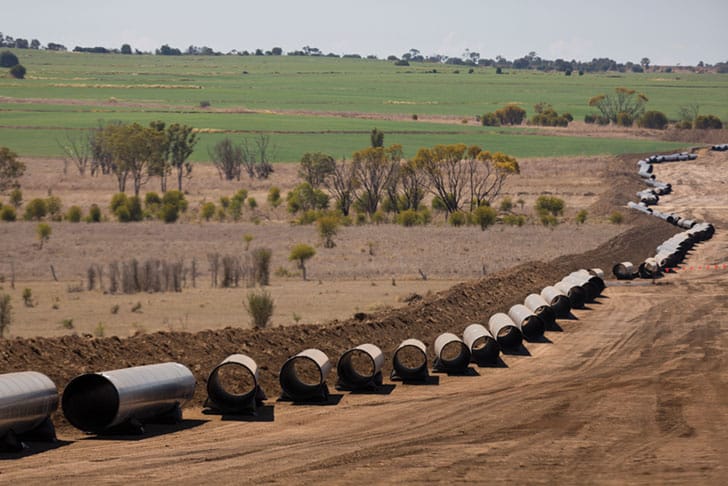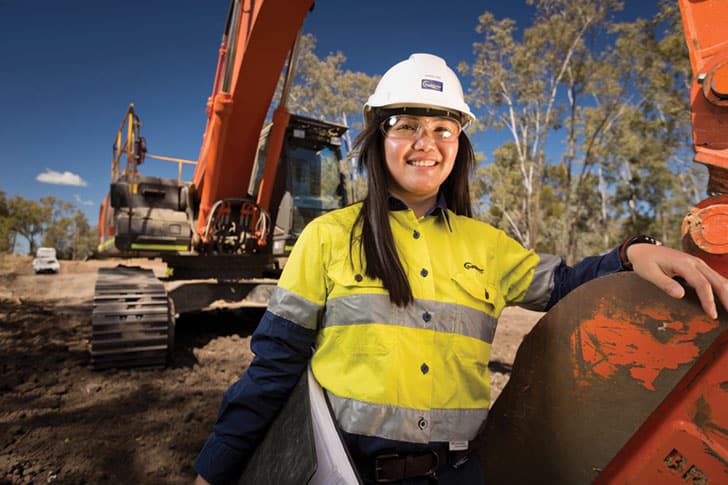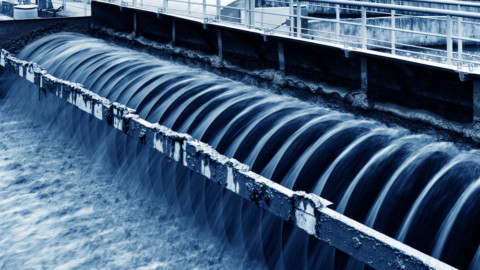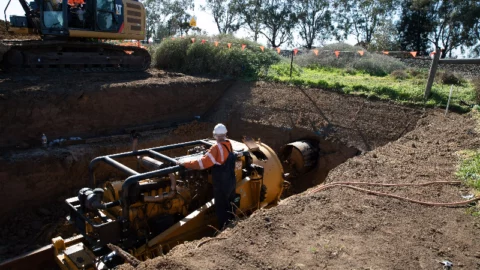The challenge of managing the water that is a by-product of the coal seam gas production process has been a major consideration for all of the major CSG-LNG projects currently underway in Queensland. Together with SunWater, the QCLNG project has developed a unique solution which allows produced water to be put to use in the community.
In February, SunWater commissioned the Woleebee Creek to Glebe Weir Pipeline, which will transport up to 36,500 megalitres of treated coal seam gas water per year from the QCLNG project for beneficial use by industrial and agricultural industries.
Construction of the pipeline was completed in 2014, with the pipeline and pump station commissioned in late 2014. Final interface commissioning was carried out in early 2015 with QGC’s infrastructure and water treatment plant.
Operation of the pipeline and the first supply of treated water commenced in February 2015. This water was pumped to Glebe Weir, boosting overall water supply to the Dawson Valley Water Supply Scheme (WSS).
SunWater Industrial Pipelines General Manager Tim Donaghy said the milestone was great news for local customers, and indeed for the coal seam gas industry.
“This marks the beginning of beneficial use by irrigation and industrial customers from both the pipeline and the Dawson River,” Mr Donaghy said. “Water is extracted as part of the coal seam gas production process. It is treated to a high standard at QGC’s Woleebee Creek Water Treatment Plant using ultra-filtration and reverse osmosis, and is monitored by both QGC and SunWater to ensure it meets strict compliance requirements before it is released.
“The beneficial use of the treated water has been approved by the Department of Environment, and is reflected in the revised Fitzroy Basin Resource Operations Plan.
“The treated water, which is included as part of the scheme supply and announced allocations for the Upper Dawson sub-scheme, will be extracted by customers through their existing pumps and infrastructure, and measured through existing flow meters.”
Building the pipeline
The Woleebee Creek to Glebe Weir Pipeline is located approximately halfway between the Queensland towns of Theodore and Miles. The town of Wandoan, on the Leichhardt Highway was used as a central location during the construction of the pipeline.
Features of the pipeline system include:
- 150m of 1,400mm diameter mild steel cement lined (MSCL) suction main, connecting to QGC’s storage and outlet
- The Woleebee Creek pump station adjacent to QGC’s storage
- Approximately 120km of buried MSCL pipeline ranging in diameter from 914mm to 1,067mm (typically using rubber ring spigot and socket jointing system)
- A 5ML balancing storage located partway along the pipeline
- Associated pipeline infrastructure, and pipeline outlet structure for discharge to Cockatoo Creek
- 900m of 804mm diameter pipe connecting to the discharge structure.
Other major control structures and features along the pipeline include standpipes, surge tanks, air valves, scour valves, isolating valves, control valves, flowmeters, and customer offtakes.
The pump station houses five main pumps, though will typically operate in a three duty and two standby pump configuration.
The pump station will pump up to a maximum of 113ML per day, with the pipeline discharging up to a maximum of 100ML per day to Glebe Weir (both are approval limits, and noting customers may take supply from the pipeline before the remaining volume is discharged).
The pipeline operates as a pumped pressure pipeline up to the balancing storage, and then a gravity pipeline section to the outlet. Treated water is discharged from the outlet to Cockatoo Creek, approximately 600m upstream of SunWater’s Glebe Weir on the Dawson River.
Water stored at the weir is then released periodically, and used by customers downstream – predominantly irrigators – within the Dawson Valley WSS.
Delivering the water
The pipeline has two types of customers:
- Pipeline users who take water directly from the pipeline
- River users who take water stored in the Glebe Weir pond or water discharged from the weir and extracted from downstream weirs or the Dawson River.
Existing customers along the Dawson River within the Dawson Valley WSS – from Glebe Weir to the end of the Upper Dawson sub-scheme – who have medium priority (supplemented) allocations, will automatically receive the benefits of additional water added to the scheme.
These customers, typically irrigators, receive announced allocations through the year as a proportion of their annual maximum water entitlement volume and in accordance with available water supply volumes and calculations provided in the Resource Operations Plan.
These calculations will take into account additional volumes to be made available to the scheme by the discharge of treated water from the pipeline, potentially improving both reliability and maximum entitlement volumes.
Extracting the benefits
The water being supplied from the QCLNG project is treated to a very high standard, utilising ultra-filtration and reverse osmosis, allowing SunWater to supply water for beneficial use and in accordance with its environmental approval conditions and stringent water quality requirements.
Water quality and the receiving environment is monitored at a number of locations to ensure ongoing compliance.
“We are committed to seeking innovative water supply solutions for our customers and are pleased to deliver this project,” concluded Mr Donaghy.
















